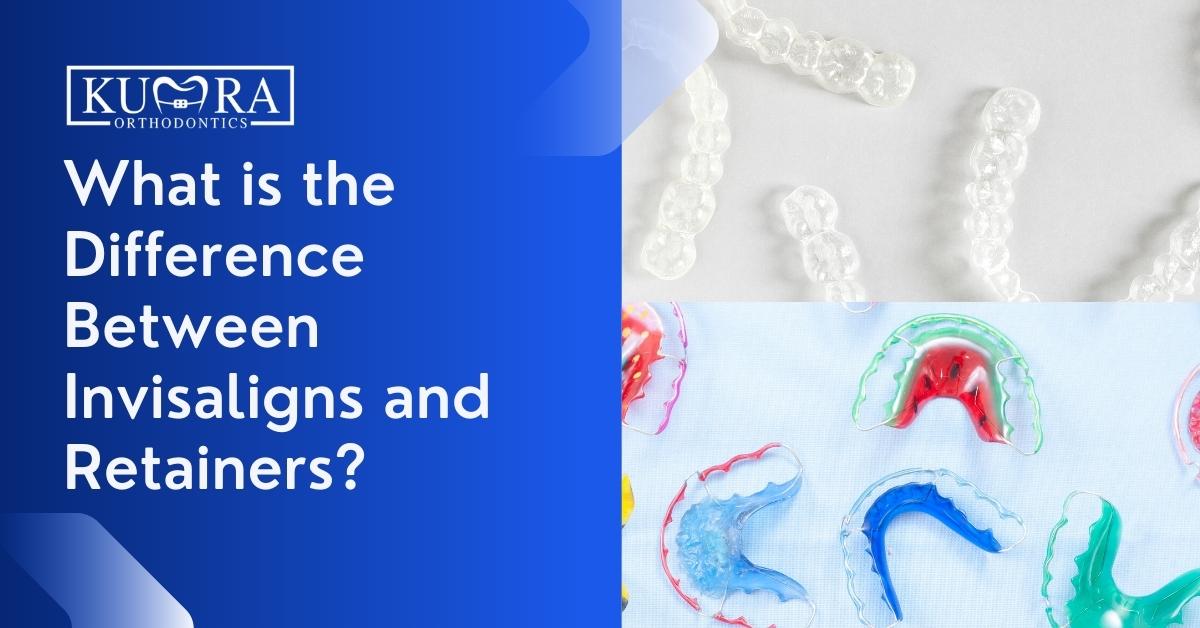Braces are still regarded as the gold standard for correction if you’re self-conscious about crooked teeth or a misaligned grin. While traditional braces have their place, less invasive and less noticeable choices are available with invisible braces.
What is the difference between Invisalign and retainers? While Invisalign aligners look similar to removable retainers, there are numerous distinctions between them. This article will break down their differences and how they can help you achieve a straighter smile.
What is Invisalign For
Invisalign is an orthodontic treatment technology that uses transparent aligners to realign teeth gradually. Each aligner advances the therapy, and patients typically wear many aligners over several months or longer to obtain the desired outcomes. Because Invisalign trays actively move the teeth, they are not technically retainers, though they may look similar.
Invisalign is a common treatment option for straightening your smile. Indeed, it has been utilized to assist over five million people worldwide in correcting their crooked teeth. The popularity of Invisalign treatment is largely due to the clear aligners, which are far more unobtrusive than metal braces. Additionally, they are detachable, making brushing and flossing much easier than with brackets.
Invisalign can be used to correct mild overbites and underbites, straighten teeth, fill gaps, and correct other orthodontic abnormalities. While aligners are quite helpful in many cases, they cannot correct the most severe problems. Dentists may occasionally be compelled to use fixed metal or ceramic braces or other orthodontic appliances.
What is Retainer For
A retainer accomplishes exactly what its name implies—it retains your teeth in a stable place. A retainer does not actively move the teeth; it merely secures them in their current position.
Retainers are worn after an individual has undergone orthodontic treatment to straighten their teeth. The retainer is used to maintain the new position of the teeth. Wearing a retainer is especially critical following the removal of braces. This is the most likely period for their teeth to shift back into their original place. A retainer should be worn for the duration of a person’s life if they wish to keep the smile achieved through braces or Invisalign treatment.
A retainer is made using a mold of the patient’s teeth. This implies that the retainer will conform to the contours of each tooth. When it comes to establishing how long retainers must be worn full-time, an orthodontist will work closely with their patient. After the teeth have become more stable in their new placements, the retainer may eventually be worn solely at night. Tightness while wearing a retainer indicates that the teeth have begun to move, and the wearer’s wear time may need to be increased.
Related: Types of Retainers You Should Know About
Needing an orthodontic appointment?
Visit Kumra Orthodontics Washington, DC or Kumra Orthodontics Stafford, VA, and request an appointment with us!
Wearing a retainer immediately after Invisalign
When the Invisalign aligners are removed for the final time, the teeth will be perfectly straight. However, they will wish to revert to their previous state. At this time, the connective tissue that connects the tooth to the jaw remains extremely elastic, and all it wants to do is snap back to its previous state.
This is why, in the days and weeks following Invisalign, a patient must wear their retainer for around 22 hours per day. They will be required to wear the retainer practically full-time for approximately six months. This is an arbitrary number. This interval may be longer than six months for certain people. It will be shorter for others. It is entirely dependent on the patient’s specific circumstances.
Similarities Between Invisalign and Retainers
Your Invisalign tray and retainers are very identical. They are almost certainly composed of the same material—durable, stiff, clear plastic that has been shaped to suit your teeth firmly.
After a few days of not wearing your retainers, you may find that they feel tight, much like each new pair of aligners did at first. This tightness indicates that your teeth are attempting to shift out of their ideal placements and into new, incorrect positions. If you experience this sensation, ensure that you resume your regular evening retainer wearing regimen.
As with Invisalign trays, retainers can be easily misplaced. To avoid losing yours, keep it in a sturdy, brightly colored container to protect it and make it more visible. If you happen to misplace your aligner or retainer, consult your orthodontist.
Related: How to Clean Invisalign Retainers: A Step-by-Step Guide
Learn more about the difference between Invisalign and retainer by contacting Kumra Orthodontics
If you’re looking for a straighter smile, don’t hesitate to contact us. We have years of experience in helping people find the right orthodontic treatment for their needs, whether traditional braces or Invisalign retainers. We want you to feel confident when you smile – and we can help make that happen. Contact Kumra Orthodontics today to schedule your appointment and start your journey to a straighter smile!



